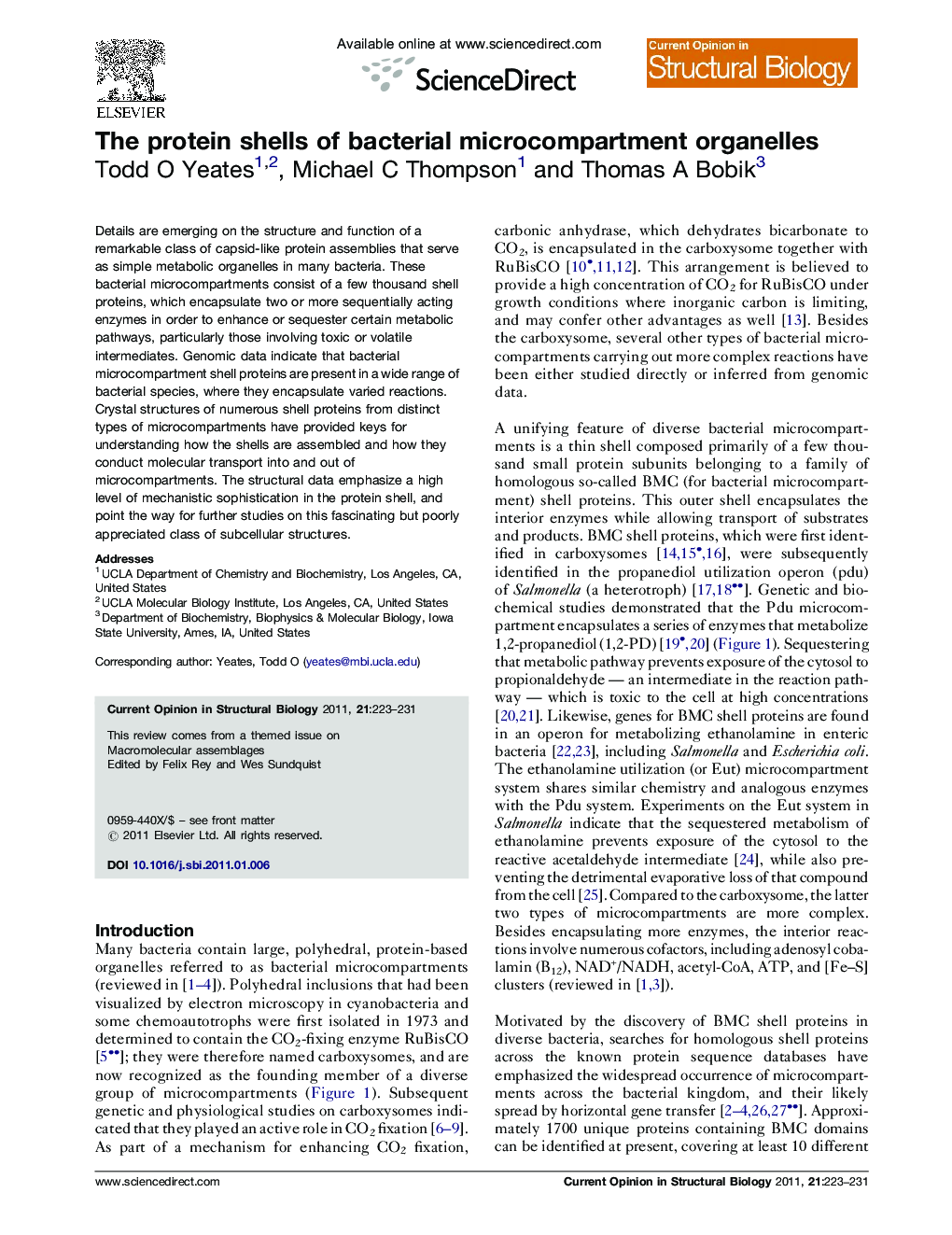| Article ID | Journal | Published Year | Pages | File Type |
|---|---|---|---|---|
| 1979441 | Current Opinion in Structural Biology | 2011 | 9 Pages |
Details are emerging on the structure and function of a remarkable class of capsid-like protein assemblies that serve as simple metabolic organelles in many bacteria. These bacterial microcompartments consist of a few thousand shell proteins, which encapsulate two or more sequentially acting enzymes in order to enhance or sequester certain metabolic pathways, particularly those involving toxic or volatile intermediates. Genomic data indicate that bacterial microcompartment shell proteins are present in a wide range of bacterial species, where they encapsulate varied reactions. Crystal structures of numerous shell proteins from distinct types of microcompartments have provided keys for understanding how the shells are assembled and how they conduct molecular transport into and out of microcompartments. The structural data emphasize a high level of mechanistic sophistication in the protein shell, and point the way for further studies on this fascinating but poorly appreciated class of subcellular structures.
Graphical abstractFigure optionsDownload full-size imageDownload high-quality image (291 K)Download as PowerPoint slideResearch highlights► Many bacteria contain protein-based organelles for special metabolic functions. ► The shells of these proteinaceous organelles are reminiscent of viral capsids. ► The basic building blocks of the shells are hexameric proteins with central pores. ► Metabolic substrates and products are believed to diffuse through the pores. ► Structural studies of the shell proteins illustrate their mechanistic sophistication.
